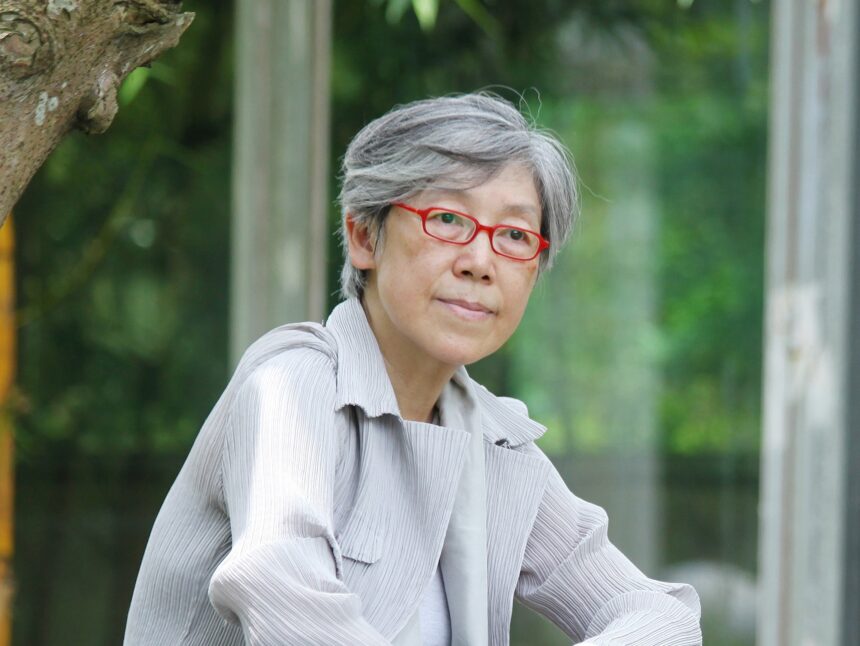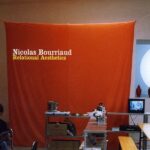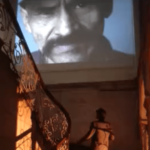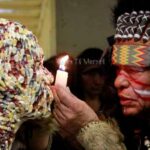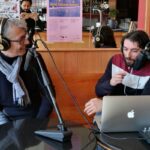An Interview with Wu Mali
Zheng Bo

Among contemporary Chinese speaking societies, Taiwan has the most vibrant scene of socially engaged art. It has been energized by a few historical forces: Taiwan went through a relative thorough democratic transition in the 1980s, when the idea of citizen participation took root; in the 1990s, the government responded to civil society demands and formulated policies such as “Integrated Community Building” and “Community Cultural Development,” enabling artists to go into communities to create works with official support; and as its economy becomes increasingly post-industrial, the public in Taiwan is paying more attention to local, tangible, everyday issues.
Wu Mali (born 1957) is the “godmother” of Taiwan’s socially engaged art. Since the 1990s she has produced a series of highly influential projects, among which, Art as Environment—A Cultural Action at the Plum Tree Creek (jointly produced with Bamboo Curtain Studio) won the Taishin Arts Award in 2013, the most prestigious art prize in Taiwan. Parallel to her practice, she led the translation of two important texts, Suzanne Lacy’s Mapping the Terrain: New Genre Public Art and Grant Kester’s Conversation Pieces: Community and Communication in Modern Art, into Chinese. In 2007, she organized the landmark conference “Art and Public Sphere: Working in Community”—and later edited a volume of the same title—to unite local practitioners, theorists, and officials. She is a dedicated teacher, and now heads the Graduate Institute of Interdisciplinary Art at National Kaohsiung Normal University. Recently she has also been active in building regional connections; in 2014 she curated a large exhibition titled Art as Social Interaction, showcasing socially engaged projects of 30 artists and groups from Taiwan and Hong Kong.
ZB: You majored in literature in college, and went on to study sculpture at Kunstakademie Düsseldorf in the 1980s. What made you move from creating art objects to producing socially engaged projects?
WM: After I returned to Taiwan from Germany in 1985 my first publicly exhibited work was an installation made of paper, titled Time Space. I covered the entire room with newspaper. It was the turbulent moment before the lifting of martial law, and some people interpreted my work as a criticism of the media. Though social criticism was not my intention, I came to the realization that even formal experiments already contain some social critique. This pushed me to reexamine the established practices of art making. What art academies taught—the investigation of formal aesthetics—could not connect with what was happening outside. I saw a huge gap between the art being produced and the ground-shifting social movements in Taiwan that were criticizing the government and the international political order. So I moved away from formal aesthetics to look for connections between art and society. In the following decade, I treated art making as a form of social critique.
In 1997 I interviewed female workers in clothing factories, and woven their stories into a work titled Stories of Women from Hsin-Chuang. My exhibition was well received, but it did not provide any real help to these female workers. I was confronted with the ethical question: what is the goal of so-called “critical art” or “political art” in general? Is it to catalyze change by focusing the public’s attention on some social issue? Or to use social issues as raw materials for art production, so I could accumulate fame as an artist? Different artists have different needs and desires. Some make art to work out personal problems, some to materialize their visual impulses. I am not this kind of artist. I like to observe life and find reasons, to make problems visible and to search for transformative potentials.
From 2000 to 2004, I worked with Taipei Awakening Association (TAA) to complete three art projects, together titled Awakening from Your Skin. I organized “Fun Fabric Workshops,” guiding the women to do some self-searching before they developed their own works using fabrics. Their individual works revealed some collective concerns. Through this process of making fabric crafts, the participants realized that they share similar life experiences, and the workshop became a medium of mutual support. TAA activists were surprised by the results of the workshops. They did not anticipate that art could accomplish what they had long deemed difficult, i.e. to introduce feminist thinking to the grass roots. The activists had been pushing for “hard” tactics like street protest and lobbying, ideas quite alien to ordinary women. In contrast, art was more affective and more accessible. The participants felt encouraged and supported by each other, and gradually built up self-esteem and agency. Women who used to be silent became quite expressive, speaking for themselves and sympathizing with others. It was a process of empowerment.

ZB: Situating social practice within an existing social movement and collaborating with existing organizations is indeed an effective strategy. Artist can bring fresh ideas to the social movement; the artist’s work is also more likely to generate concrete results in a relatively short time frame. However, it is not always possible to embed socially engaged art in an existing social movement; sometimes we are working in a field without any prior movement; we have to initiate one. In 2006 you worked with the Cultural Affairs Bureau in Chiayi County to organize Art as Environment—A Cultural Action along the Tropic of Cancer. You placed seventeen artists in ten remote villages. These artists had to start from zero. There were no NGOs in these rural communities to provide support. Did this project lead to any immediate result?
WM: Let me give you a specific example. Taihe Village is famous for Oolong tea. Taihe residents are experts in growing tea, but they did not care so much about art and design, the aesthetics of tea utensils and teahouses. In 2006 I arranged for Tsai Chiang-Lung, a ceramic artist, to go to Taihe, with the hope that he and the villagers would learn from each other. Within a year, the villagers learned to make teapots, and embraced the idea of tea culture. On the other hand, the artist got new inspirations from this exchange. The villagers drew Tsai’s attention to the nuances of taste when different types of tea were brewed in different kinds of pots. This prompted Tsai to investigate the best match between tea leaf and pot clay. It became one of his research projects. What change might unfold when an artist goes into a community is not entirely predictable. In my preliminary research I learned that the tea industry in Taihe was not sustainable. Tsai is not only a ceramic artist but also someone deeply concerned with ecological issues—he is the head of Society of Wilderness in Chiayi. So I asked him to go to Taihe, with the hope that his environmental ideas would influence local people. Yet nothing happened in the first two years. In 2009 Typhoon Morakot struck Taiwan. It caused serious landslides and destroyed most of the tea plantations in Taihe. The younger generation in the village started to think about sustainability. This then gave Tsai the opportunity to bring up ecological issues with the community.
After the typhoon, one of Tsai’s teachers in graduate school, Chen Cheng-che, went with Tsai to help with reconstruction in Taihe. Chen is an expert in bamboo architecture. He discovered that an abandoned pigpen in the village was actually built with precious Formosan cypress from Ali Mountain. He tidied up the pigpen and turned it into a teahouse full of Zen spirit. Young people in the village were very much inspired and started building their own teahouses. When I placed Tsai in Taihe in 2006, it was purely an idealistic experiment. To my surprise, chance allowed significant changes to materialize, both for local folks and for the artist. In many cases, socially engaged art needs chance. You cannot know for certain what will grow up tomorrow from the seed you plant today. A Cultural Action along the Tropic of Cancer directly and indirectly led many artists to enter communities. Subsequently, community-based artist residency has become an important cultural policy adopted by various levels of government.
ZB: Taiwan is no longer in the phase of rapid industrial expansion. A lot of factories have relocated to Mainland China. People in Taiwan are paying more attention to their relationship with nature. For more than a decade you have been working on projects related to land and water. In 2011 you and Bamboo Curtain Studio initiated the project, Art as Environment—A Cultural Action at the Plum Tree Creek. This massive endeavor included community mobilization, pedagogical programs in primary and secondary schools, dance, theatre and other events. In your words, it was to “glue together fragmented land and divided knowledge so that people can rediscover and reimagine the local.” This “cultural action” began with a series of breakfast gatherings. Why did you choose food as the starting point of community mobilization?
WM: Zhuwei, the site of this project, is in Taipei’s northern suburb. The community borders Datun National Park. The mountainous terrain made it difficult for real estate development, so a lot of farmland has been saved despite the pressure of urban expansion. Some people who do not own land are also attracted by the physical, self-sustaining lifestyle of farming and rent land to grow crops. Plum Tree Creek winds through Zhuwei. We wanted to use food to attract people to action. For one year, we organized a breakfast party every month, presenting innovative cuisine made from ingredients-of-the-month. At each gathering a specific topic would be discussed. Gradually a comprehensive understanding of the creek emerged. The relaxing conversations allowed us to grasp the texture of the land and the lineage of local culture, and unite local residents who cared about environmental issues.
In Taiwan, many recent art projects and social movements, in both urban and rural areas, are trying to refocus people’s attention on land, water and nature. Taiwan has a long agricultural tradition; its influence remains strong. Many retired folks in Zhuwei actually grew up in the countryside, so they were quite experienced in farming. Now they do it as a form of exercise, or for a healthy diet. To re-establish a lifestyle close to nature is a good starting point to re-connect art with life.
ZB: How was the project funded?
WM: At the beginning we did not have any financial support. It was just a group of enthusiasts working together. Later we received a curatorial grant from the National Culture and Arts Foundation, so we launched the project formally. More important than money was the mobilization of community members. Each person in the community represents a certain kind of resource. The breakfast gatherings were in fact a process of learning about the community, getting people out, and gradually linking up people’s resources. So our main focus was to think carefully how resources in the community can be integrated, rather than applying for funding. Our project, A Cultural Action at the Plum Tree Creek, lasted from 2010 to 2012, and received a lot of attention from the art world. In 2013 it won the Taishin Arts Award; we were given a prize of NT $1,000,000 (about USD $30,000). We set up a trust with this money to enable future artists-in-residence at Bamboo Curtain Studio to continue making socially engaged works along Plum Tree Creek.

ZB: In describing your work, you frequently use the word “chance.” Does it mean to wait for the right moment in the right place, as described in traditional Chinese wisdom?
WM: Chance does not mean passively waiting for things to happen. The key to socially engaged practice is to continue “weaving.” As mentioned earlier, everyone holds some resources. Seemingly insignificant skills like writing, cooking and woodworking, when integrated, could become a remarkable force. The force will get bigger when more friends come along. In this constant weaving, something is bound to emerge. The process is dynamic, yet unpredictable.
ZB: The fabric workshops and breakfast gatherings have one thing in common: they both emphasize the return to everyday life; they both use an amiable form to bring community together. Some critics might say, this relatively “soft” approach does not touch on harsher, more fundamental problems, and lacks criticality or antagonism. How would you respond to such criticism?
WM: This way of seeing things is too simplistic. Let me give you an example from the fabric workshops. One of the participants was a full-time housewife. Previously, when her husband suddenly called to inform her that he could not come home for dinner because of some engagement at work, she would become irritated, and the couple argued a lot. After she started attending the fabric workshops, instead of getting angry, she felt happy that her husband was not coming home for dinner, because she did not need to stop her craftwork. Without her own working space, she did all of the craftwork in the kitchen. The point is, her own change startled her. It made her nervous. So she brought this up in the workshop to discuss with other women. In one way or another the women in the fabric workshops rediscovered their own needs, their own purposes of life, and their own values. The process was rich in details and cannot be summed up by theories. The reality is, many social changes take place in life’s crumbs and scraps; they remain beyond notice if we only talk about critical theory in abstraction.
For another example, when villagers in Taihe started to appreciate tea culture, some critics may claim that they are adopting a petit-bourgeois mindset. But what they are doing is entirely different: they do not depend on capitalist operations of market, consumption, and profit making. They are willing to forgo monoculture, willing to keep some weeds and wild flowers. They even make tea out of them. This is a huge change. In the 1990s my art making had an antagonistic, critical flavor; in the recent decade and half, the core of my practice is to locate the problem and then search for possibilities to turn things around.
ZB: To effect long-term change, socially engaged practices and social movements need to come together in alliance.
WM: Social practice is often only the beginning. It needs to be followed by the sustained efforts of social movement organizations and communities. Our work is never restricted to the so-called art world. We cooperate with local organizations to promote citizen education, to build mechanisms to strengthen civil society. For example, in 2006 I initiated the project By the River, On the River, Of the River—Tracing Danshui River with several community colleges in New Taipei City. As an art project, it was declarative. But after it ended, the community colleges have all continued working on the issue. In A Cultural Action at the Plum Tree Creek, a significant part of our work was in fact to develop educational programs with primary and secondary schools. Inspired by our proposal to search for the legendary tree plum, Chen Chien-Hsing, a teacher at Zhuwei Elementary School, wrote a class plan to help students investigate Zhuwei’s ecological history. Bamboo Curtain Studio, my partner in the Plum Tree Creek project, is a respected local organization. They have carried on the work after I left.
The Plum Tree Creek project generated visible changes. New Taipei City government started to pay more attention to this waterway, and is now working on a new landscape plan. Previously they never discussed policy plans with local residents; now they send the plans to us, and we then, through Bamboo Curtain Studio, distribute the plans in the community. A platform for dialogue has been established.
ZB: Having translated two important English texts, you are quite familiar with socially engaged practice in the West. In your opinion, how is Taiwan’s socially engaged art different from the way it is practiced in the West?
WM: Let me say a few words about political economy first. For a long time Taiwan was an agricultural society. After WWII, it became the manufacturing base for American and Japanese corporations. Factories proliferated and Taiwan placed itself at the back end of global capitalism, similar to the situation in Mainland China today. Since Mainland China started to open up in the late 1970s, many factories have moved out of Taiwan to China. Taiwan lost its competitiveness, and the economy has stalled in recent years. In short, within the system of global capitalism, Taiwan occupies a very different place from that of Europe and North America. The history of art is also different. Traditionally, art in Taiwan was very much intertwined with folk religion and quotidian practice.
When Japan colonized Taiwan, so-called “modern art” education was introduced. What the Japanese brought was “second-hand” modern art, for example, French impressionism which they adored. In 1949, when the Nationalist government fled to Taiwan, they came with court paintings and calligraphies—classical, elite art. At the same time, the American military personnel stationed in Taiwan became the main buyers of modern art, propelling the rise of the gallery industry. Painting groups like May Society and Oriental Society, catering to American taste, rode the wave of abstract expressionism and remained influential from 1950s till the early 1970s.
For our generation, the desire to return art to the fertile ground of life resurged. We want to redefine the value and meaning of art. This entails a process of relearning. In 2006 when I organized A Cultural Action along the Tropic of Cancer, we were actually building a learning artistic community. Artists in Taiwan have a different task at hand: art is not equal to object production; Taiwan does not possess the conditions for an art capital market to circulate. We cannot depend on the constant reinvention of “the avant-garde” to sustain art. One way for art to survive in Taiwan, and for it to have a real purpose, is to return to everyday life to search for possibilities, to let art become an indispensible part of life.
ZB: This idea to re-acquaint oneself with folk life, with land and water, should not slide into a kind of nostalgic conservatism, right?
WM: You could say that Taiwan in the 1970s was dominated by strong nativist sentiment. It was caused by the despair people experienced in the industrialization process, when traditional values were quickly vanishing. Today, after extensive reflection on the dialect of the local, after we have gained enough confidence, discussions of the local are no longer just nostalgic, but rather inquisitive and forward-looking. We are celebrating Taiwan’s multiplicity. Taiwan has a number of aboriginal communities with very different cultures. This diversity was further enriched by cultural practices introduced during Qing Dynasty, the Japanese colonization, and later the Nationalist migration, and the American influence. There are lots of difficult questions waiting for us in layers of history. Previously we could pretend to not see them because we lived in a totalitarian system. After the democratic transition, these questions are slowly being teased out with new tools of knowledge production. We now recognize, and embrace, Taiwan’s historical and cultural complexities.
ZB: While it is important to be grounded in the local, to address specific local concerns, how should we link the local with the international?
WM: Local and international issues are always interconnected. The form of our lifeworld is shaped by various intricately linked local and global factors. For example, when we looked into the cause of Plum Tree Creek’s pollution, we discovered that upstream pig farmers released sewage into the creek, and downstream municipal wastewater was not properly managed. All these point to the bigger, global problem of urban expansion. I do not think that we should get rid of small pig farms on the edge of the city; compared to large meat companies, they are much more environmental. What we should do is to help these individual farmers find ways to make the process more sanitary. The local government wants to treat sewage in a centralized facility and then discharge the water into the ocean. The problem is, when wastewater is sent to the ocean, not to the creek, the creek will simply dry up. Farmers in the region will not be able to water their land. Our work is to excavate the complex issues underlying the specific problems of this small creek, including the way we think about development, the way we imagine land. A single art action will not be able to resolve the predicament, but it can energize more people to start thinking about it. Social change always starts with alternative social imaginaries.

ZB: In addition to your own practice, you are also dedicated to educating and supporting a new generation of practitioners. How are they different?
WM: Previously artists often went into communities with the intent to collect materials, both physical and social, but their ultimate goal was always to exhibit artworks, or documents of art projects, in museums. Nowadays, the younger generation has come to realize that museum opportunities are few and far between; they are no longer fixated on getting validated by elite institutions. They move into communities to work and to live: they convert disused structures into studios, create conversations with local people, local spaces, and local histories, and become committed community members. They are motivated by different reasons, and pick up different identities. Some go in with a creative industry mindset, searching for business opportunities; some want to experiment with alternative social and economic models, practicing “social design.” Many young people have chosen to move to the countryside not for artistic reasons, but simply because they do not want to bear the economic pressure of living in urban centers. Once they are in the countryside, the problems they encounter would inevitably push them to start thinking about alternative ways to design their individual and communal lives.
ZB: This term you just used—social design—sounds promising. Design suggests practicality, while allowing some space for imagination. If the younger generation no longer foreground their artist identity, no longer emphasize that they are making art, if they can receive support from multiple fields and channel different forms of social energy, it is perhaps time for the notion of socially engaged art to recede from view.
Wu Mali was born in Taipei and lives and works in Kaohsiung and Taipei. For the past three decades, she has been the leading artist and theorist on community-based public art practice in Taiwan. More recently, her work has taken an eco-feminist turn in response to the impact of globalization. In 2013 the Plum Tree Creek project won the Taishin Visual Arts Award. Her artworks have been exhibited at the Venice Biennale, Taipei Biennial, Asian Pacific Triennial, and Fukuoka Asian Art Triennial. Currently she teaches at the Graduate Institute of Interdisciplinary Art, National Kaohsiung Normal University, Taiwan.
Zheng Bo is FIELD’s Corresponding Editor for China. His essays on Chinese socially engaged art have been published in multiple journals and books (most recently in Global Activism: Art and Conflict in the 21st Century, MIT Press, 2015) and he is an editorial board member of the Journal of Chinese Contemporary Art. Currently he is building an online database and a MOOC, both on Chinese socially engaged art. Zheng currently teaches at the School of Creative Media, City University of Hong Kong, and is an affiliated member of the Institute of Contemporary Art and Social Thought at China Academy of Art in Hangzhou, China.
This interview was partially supported by a grant from the Research Grants Council of the Hong Kong Special Administrative Region, China [Project No 21403014].
Huang Chen helped with the transcription and translation of this interview. She is a researcher on the “Socially Engaged Art in Contemporary China” project at the City University of Hong Kong.

